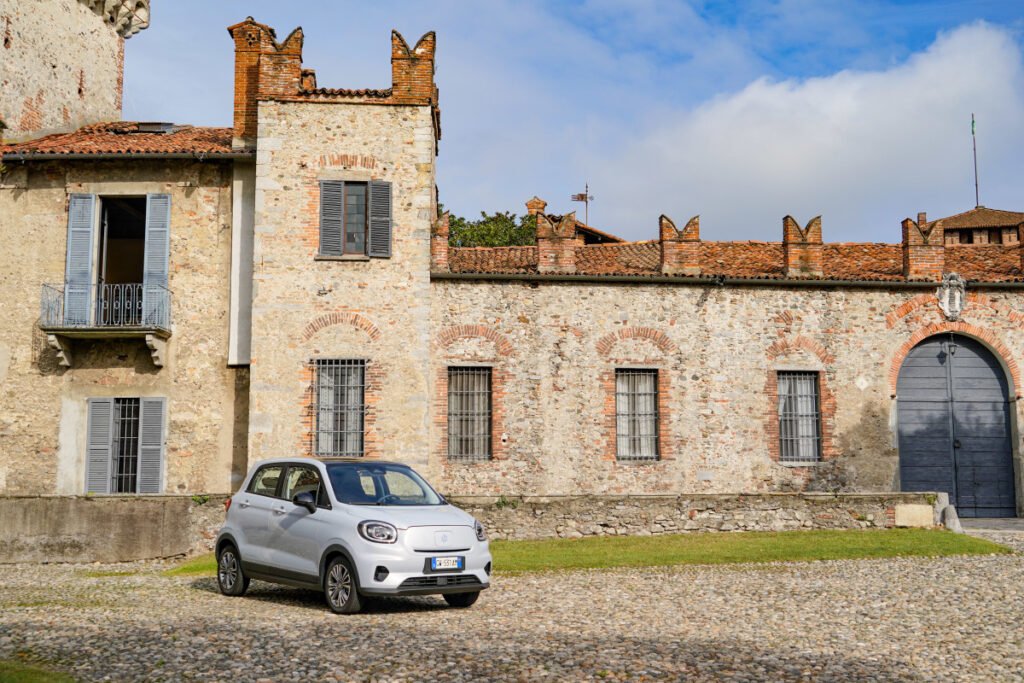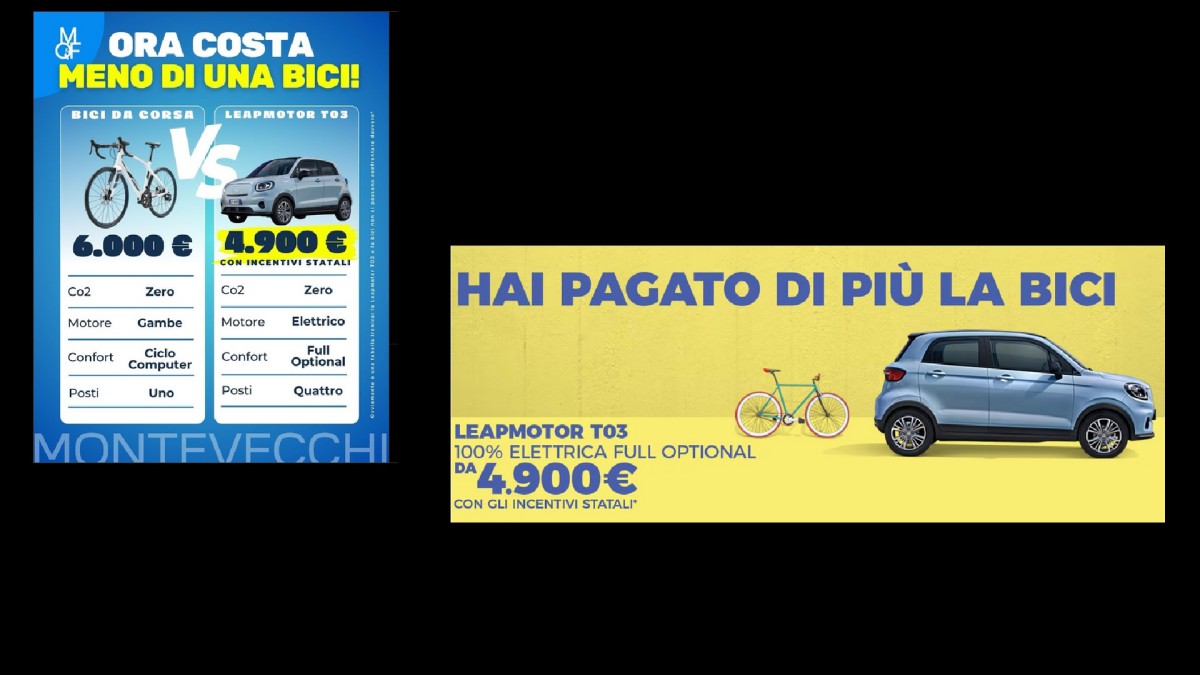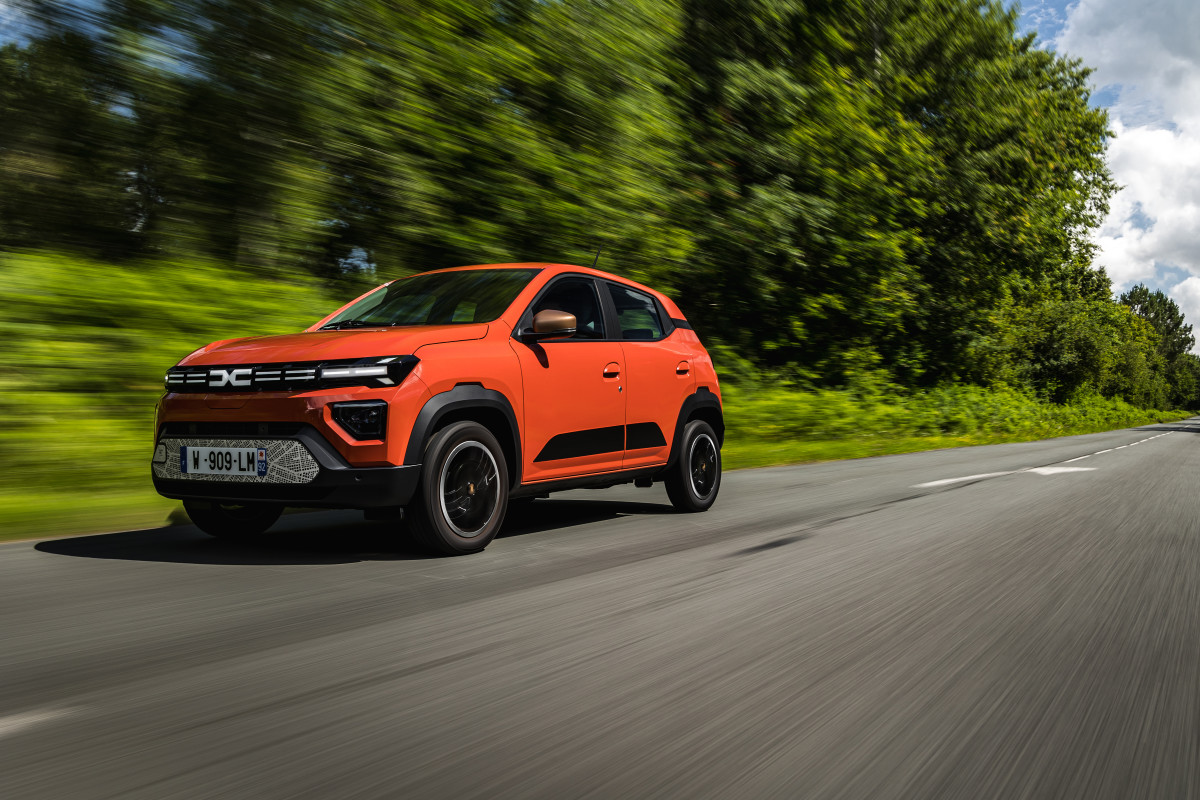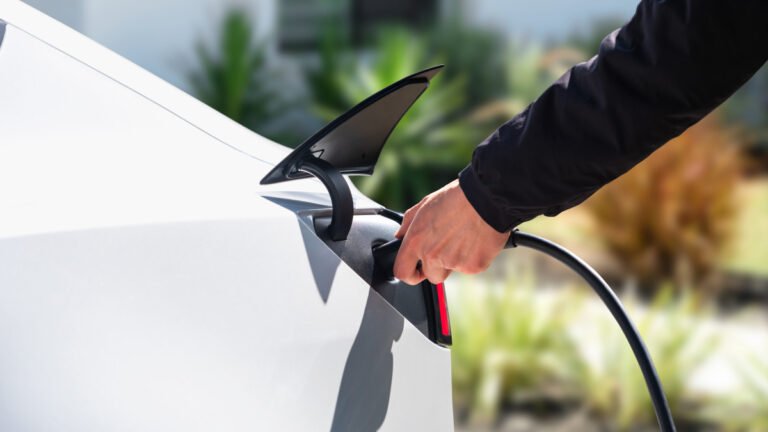
An electric car that costs less than a bike? It’s the reality in Italy
While federally backed tax rebates for electric vehicles may be a thing of the past in the United States, in other countries, they’re just getting started. Case in point? Italy, where some advertisements are peddling their electric vehicles at prices comparable to another popular form of green transportation: the bicycle. It’s a stark comparison to the U.S. EV market, where overnight, many EVs just became $7,500 more expensive to purchase.

The rightmost ad, when translated, reads “you paid more for the bike,” which may very well be true for some Italians. The Leapmotor T03 pictured in both of these ads costs just €4,900 after a mix of manufacturer price cuts and government subsidized rebates. Earlier in the year, Italy approved subsidies equating to nearly 600 million euros (roughly $700 million US), partially to drive faltering EV demand. While individuals get a state-sponsored discount of €11,000, corporations can realize even more savings. The rebate allows companies to save up to €20,000, covering up to 30% of the total purchase price, on electric-powered vehicles. Other European countries, including the United Kingdom, have also kicked off new EV incentives in recent months.
Of course, not all Italian shoppers will qualify for the generous rebate. In order to qualify, customers will have to scrap a vehicle that doesn’t meet Euro 5 emissions standards set in 2011. It sounds an awful lot like the Car Allowance Rebate System program, sometimes referred to as “cash for clunkers,” spearheaded in the late 2000s in the U.S. That program was also used to buoy new car sales at the cost of destroying old and less fuel-efficient vehicles, and, arguably, more importantly, temporarily disrupting the used car market in a serious way. Italy’s program also stipulates income restrictions on eligibility, so anyone making more than €30,000 a year won’t be eligible for the full rebate.
Dacia Spring Dacia
The Leapmotor T03 isn’t even the least expensive EV for sale in Italy
Customers who are really hunting for a bargain can find an even cheaper alternative to the Leapmotor. The Dacia Spring minicar normally starts at around €18,000, but with rebates, the final cost ends up at just €3,900, €1,000 less than the Leapmotor T03. Both of these foreign-built cars are considerably less expensive than the cheapest Italian-built alternative, the Fiat 500e, which can be cut down to €9,950. While both are essentially cheap hatchbacks, the 500e is technically marketed as more of a style statement. The Dacia boasts more range and a larger battery, but the 500e does offer slightly quicker charging. Even the “expensive” Fiat, however, costs about half what the cheapest cars in the U.S. do. At today’s conversion rate, its after-rebate cost is around $11,620.
Final thoughts
Italy’s generous EV rebate is part of a push to clean up urban areas and reduce air pollution. The plan targets a minimum of 39,000 zero-emission vehicles by June 2026, which means a huge portion of 2010-era gas-powered cars are likely to end up in the scrapyard. Unfortunately, EV rebates — as with most environmental regulations — have quickly taken a back seat in the U.S., so Stateside shoppers wishing for truly affordable EVs are left to gaze longingly across the Atlantic.




